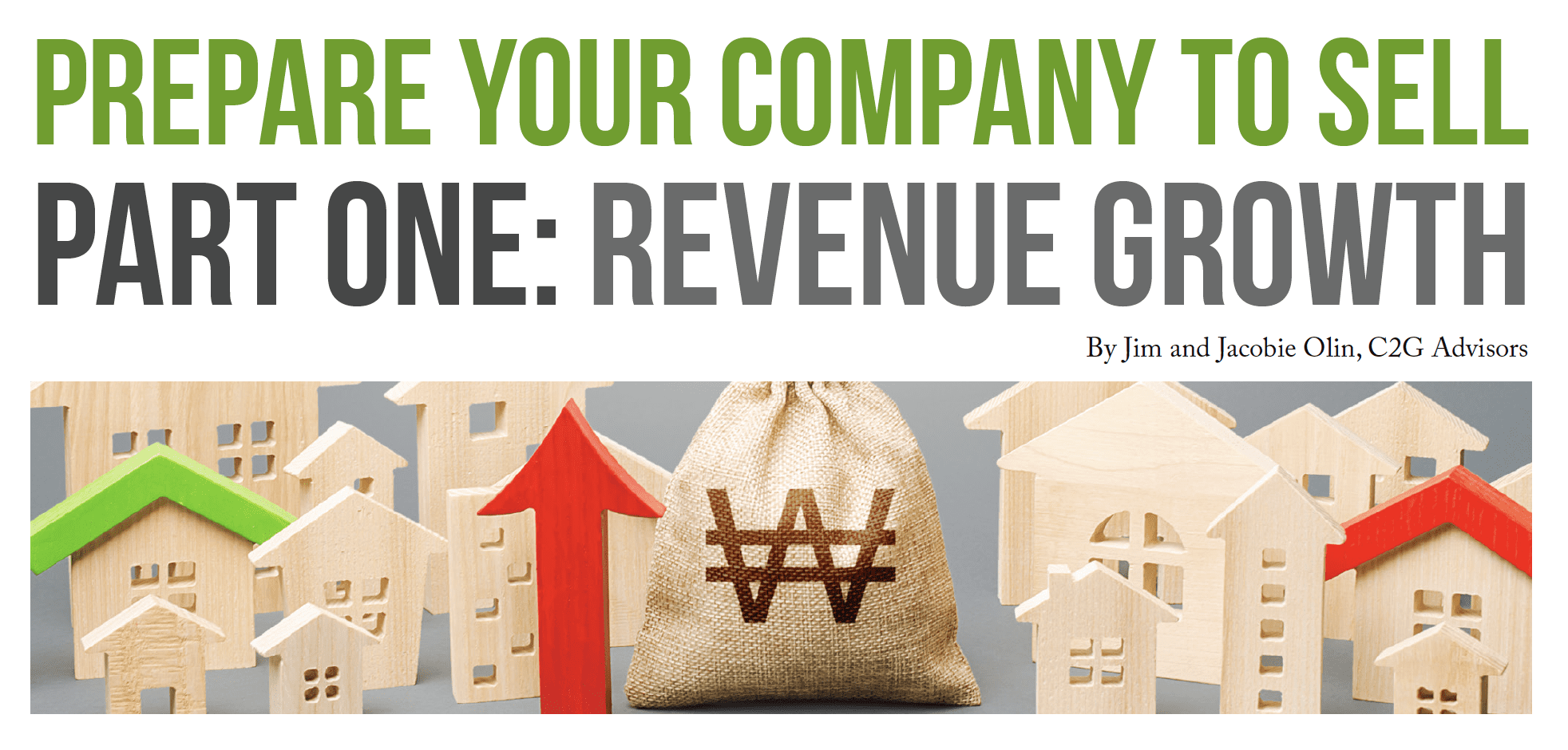With increased acquisition activity, at C2G Advisors, we regularly are asked, “What steps can I take to prepare my company to sell?” We’ll unpack this question in a three-part series. Buckle up!
For this first section, let’s focus on revenue growth. Although ancillary revenue streams are extremely important, we will not broach them in this article.
Note: Let me pause and say that it is never too early or late to begin preparing your company for its eventual sale. Although having 36 months of your financials all pointing “up and to the right” is the Holy Grail, that is just not feasible for many companies . . . and that is OK.
Revenue growth is achieved in two ways: inventory growth and revenue growth per inventory. Simple, right? Unfortunately, these are two of the toughest things to achieve if you haven’t yet raised several hundred million dollars.
Inventory Growth
Adding inventory to your portfolio is the best way to achieve revenue growth. This is achieved both organically and inorganically. For most companies, however, organic growth is the only feasible route. This is easier said than done as you and your top five competitors are all vying for the same houses or condos. Fortunately, there are companies whose sole purpose is to assist with organic growth. Vintory is one of those companies.
Pro Tip: Vintory CEO, Brooke Pfautz, said the number-one action a property manager can immediately take to see results is to update their homeowner landing page.
Let’s look at an example:
You add a home that brings in $50,000 per year in gross rents to your company. On average, you will bring 10 percent of that to your bottom line . . . $5,000 per year in profit. The average company sells for a four multiple, so that home not only brings you $5,000 profit every year but also brings you $20,000 when you sell.
Let’s continue: With the assistance of Vintory, you have now grown your company to 100 homes that each do $50,000 per year. That is $5 million in total gross rents. Your profit is 10 percent of that, or $500,000. Now you are ready to retire to the Caribbean, and you sell for $2,000,000. Bravo!
Revenue Growth per Inventory
So you’ve sold your company and retired so that you can sip on Mai Tais and relax on a beach.
What if I told you that you could have sold for more?
While inventory growth is the most important lever, extracting the highest possible revenues from each unit is the next step. This can be achieved by using various yield management strategies to optimize your rates.
If that sounds foreign and confusing, you are not alone. Fortunately, there are fantastic dynamic pricing companies like PriceLabs that work behind the scenes to auto-update your rates, leading to improved revenues. What’s better is that this process is mostly automated, so for all you know, you’d be spending less time adjusting rates and making more money.
Richie Khandewal, cofounder of PriceLabs, said the number-one action a property manager can take to increase RevPAR is to have dynamic minimum-stay requirements. If your minimum-stay restrictions are too high, you could lose out on last-minute demand.
Conversely, if you fill your far-out calendar with short stays, you could lose on longer bookings. Dynamically adjusting your minimum stay length is money.
Let’s take the example from above:
You have grown your company to 100 units, but in this scenario, you are using a company like PriceLabs to help you with your yield management. With its dynamic pricing, your homes now perform 30 percent higher in revenues! So your 100 units are now averaging $65,000/year. Your total gross rents are now at $6,500,000. Ten percent of that, and your profit is $650,000. You sell for a four multiple, and you get $2,600,000. That is an additional $600,000 straight into your pocket. Those Mai Tais are now tasting significantly better!
In the next issue, we will dive into the expense side of the sell-preparation equation.


